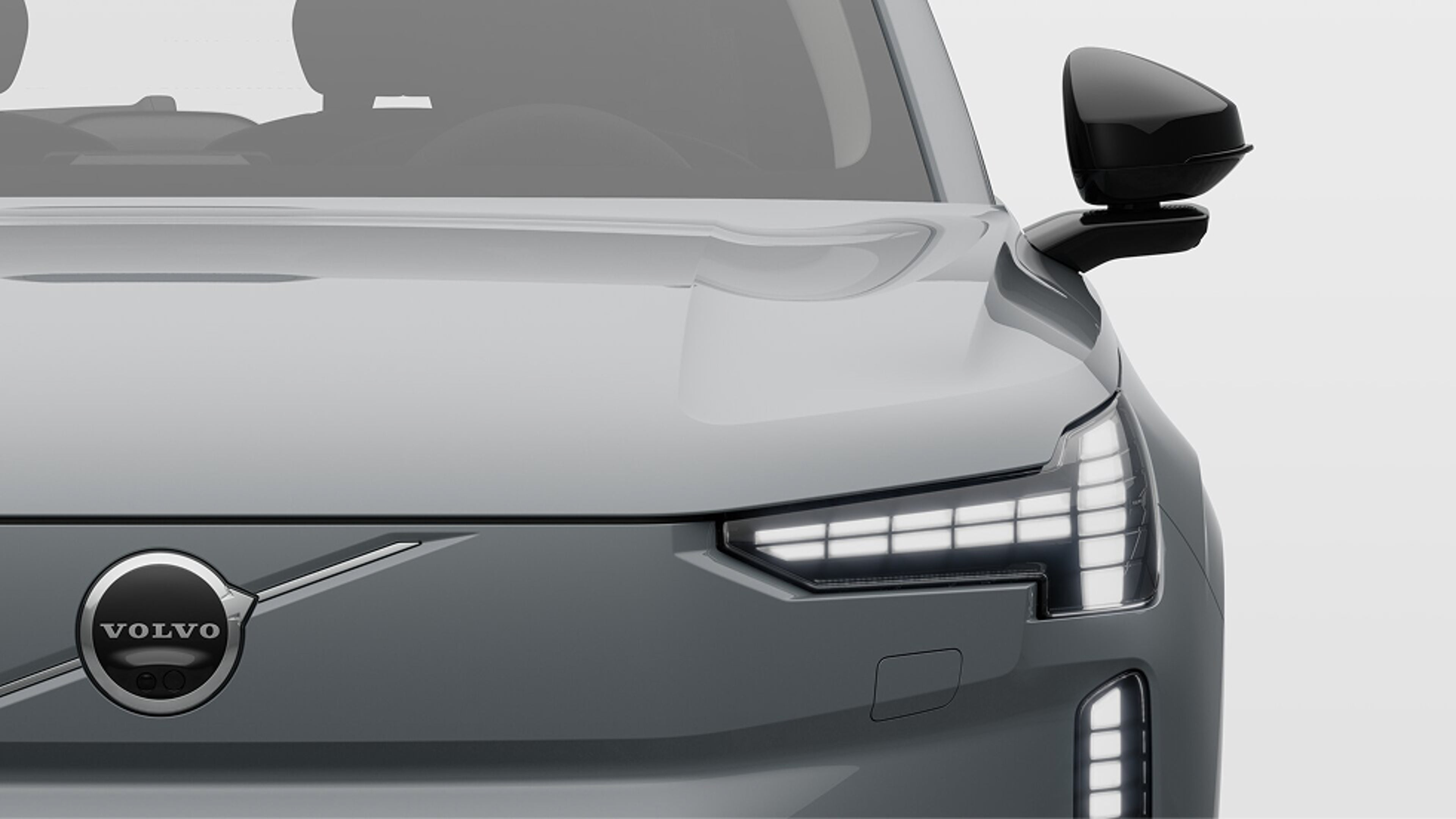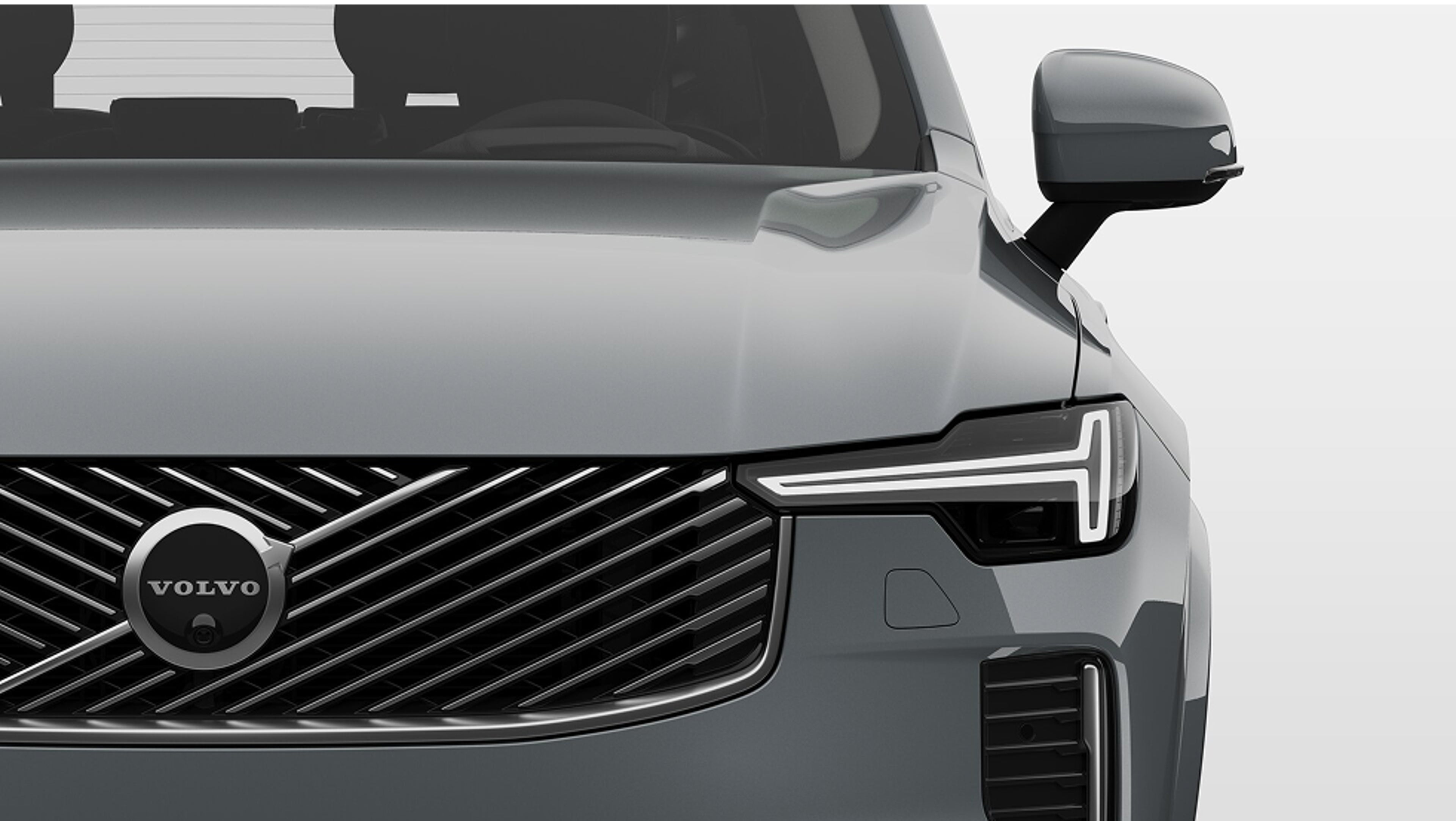How electric cars work
Driving an EV feels different, in the best way. It accelerates instantly and offers a near silent drive.
Benefits of electric cars vs petrol cars
Why drive electric?

Everyday ownership
Living with an electric car
Living with an electric Volvo is designed to be simple. You can charge at home, at work or on the road. Wherever you need to, really.
With instant power and a quieter drive, your journeys feel more effortless. And with fewer moving parts, these cars require less maintenance than traditional fuel cars.
Underneath the hood
What’s inside an electric car? Here are some of the main components that make up a Volvo electric car:

Battery pack
Battery pack

Electric motor
Electric motor

Regenerative braking system
Regenerative braking system
Inverter
Onboard charger
Thermal management system

Sustainability and our EV technology
Our ambition is to reduce CO₂ emissions per car by 65-75% by 2030. With more of our models now fully electric, we’re steadily moving toward a fully electric future. We're also actively working to build our cars in a more sustainable way, by, for example, increasing the share of low-emission and recycled materials in our products.
Why electric cars use energy more efficiently
The working principle of an electric car is simplicity. Electricity from the battery passes through the inverter, which then powers the electric car motor. The motor drives the wheels. No clutch, no gears and no engine noise.
One of the biggest differences between electric cars and petrol cars is efficiency. About 90% of an EV’s stored energy goes toward driving the car. In traditional petrol engines, only around 30% makes it to the wheels, while the rest is lost, mainly in the form of heat.
.png?branch=prod_alias&quality=85&format=auto&iar=0&w=3840)
How do electric car batteries work?
The battery is the powerhouse of every electric Volvo car and built with hundreds of lithium-ion cells designed for performance, efficiency and long life. Our EVs use high-voltage systems, either 400V or 800V, with 800V platforms helping to enable faster charging, lower heat generation and charging power of up to 270–350 kW.
How do electric motors work in EVs?
Electric motors give EVs their signature instant acceleration and quiet drive. In Volvo EVs, high-voltage battery packs power either asynchronous (ASM) or permanent magnet synchronous motors (PSM), each offering different benefits. ASM motors are highly efficient, generating torque through electromagnetic induction. PSM motors use permanent magnets on the rotor to create a magnetic field. Both deliver smooth, direct propulsion with no gear shifts.
Instant torque
Electric motors produce full torque the moment you touch the pedal. There’s no waiting and no build up. Just smooth, powerful acceleration from the start. It's part of what makes driving an EV feel so effortless.
Regenerative breaking - how EVs recover energy
Every time you slow down in a Volvo EV, you’re not just stopping. You’re recharging. When you ease off the accelerator, the motor works in reverse to convert kinetic energy back into electricity. That energy is stored in the battery for later use. Regenerative braking can extend your range and reduce wear on your brake pads. It’s automatic and happens without you even noticing.
One-pedal drive
In all Volvo EVs, you can drive using just the accelerator. Press to go, lift to slow down. It’s intuitive, especially in traffic, and makes use of regenerative braking to help maximise comfort.
Drive mode Eco
In all our electric cars you’ll find drive mode Eco. Activating this mode enables properties that contribute to more efficient driving. When this mode is activated you'll be able to see your car's energy efficiency through the range assistant app in your centre screen display. Additionally, this function limits climate comfort and driving performance to save energy for maximised range.
Different types of electric cars

Fully electric cars
Volvo fully electric cars run entirely on electricity, making charging a natural part of your daily routine. Plug in at home with a wallbox or top up on the go at public charging stations.

Plug-in hybrid cars
Volvo plug-in hybrids blend electric efficiency with a combustion engine. Charging is flexible, either at home or at public stations – just remember, rapid chargers are meant only for fully electric cars.
FAQs about how electric cars work
How do electric cars work compared to petrol or diesel cars?
In a fully electric car, the traditional fuel tank is replaced with a battery, and the combustion engine is swapped for an electric motor. This setup helps deliver instant torque and smooth acceleration, with no need for gear changes. Unlike petrol or diesel vehicles, fully electric cars produce zero tailpipe emissions and don’t burn fuel while driving.
How long does an EV battery last?
EV batteries are designed with the same lifetime requirements as traditional combustion engines and gearboxes. The design target for our EV batteries is 15 years, or 300,000 km. And at this point, most of our batteries are still expected to have more than 70% of the original capacity.
Do electric cars have transmissions?
Yes, electric cars have a single-speed transmission. They only need one gear as they perform the same over the entire RPM (rotations per minute) spectrum. This means that the moment your foot hits the pedal, the motor has enough power to start turning the wheels, unlike in petrol cars.
Why do EVs accelerate faster than petrol cars?
Electric vehicles can deliver instant torque as soon as you start driving, helping them accelerate faster than traditional petrol cars.
What happens if an electric car runs out of battery?
Your electric Volvo will give you multiple clear warnings through on-screen alerts in your in-car display, and even a change in driving feel as the car gradually reduces power to preserve energy.
Unlike fuel cars, where performance stays the same until the engine stops, EVs are designed to signal early and slow down gradually. If the battery does reach zero despite these warnings, the car will simply stop and wait for a charge. From there, you can recharge it through any standard charging point or call for roadside assistance.
Do electric cars need oil changes or maintenance?
Electric cars don’t need oil changes, and they’re low-maintenance cars to own. Most maintenance for EVs involves simple checks such as filter replacements, tyre rotations and checking fluids such as brake and coolant.
What is an electric drivetrain?
An electric drivetrain, also called an electric powertrain, is the system that powers your electric car. It includes the battery, electric motor, inverter and the components that deliver power directly to the wheels. Unlike traditional drivetrains with complex gearboxes and exhaust systems, electric drivetrains are simpler, smoother and more efficient in terms of producing minimal energy loss.
What’s the difference between an AC and DC motor?
Both AC and DC motors turn electrical energy into movement, but they do this in different ways. DC motors use small components called brushes to physically switch between different sets of electrical windings as the motor spins. Since only some of the windings are used at a time, DC motors aren’t as power dense. This means they’re generally less efficient for high-performance use.
To get smooth, responsive performance across different speeds, modern motors use advanced power electronics. These systems control AC motors by activating the windings in a specific sequence. No physical contact is needed between the moving and stationary parts, which makes AC motors more compact, more efficient and maintenance-free.